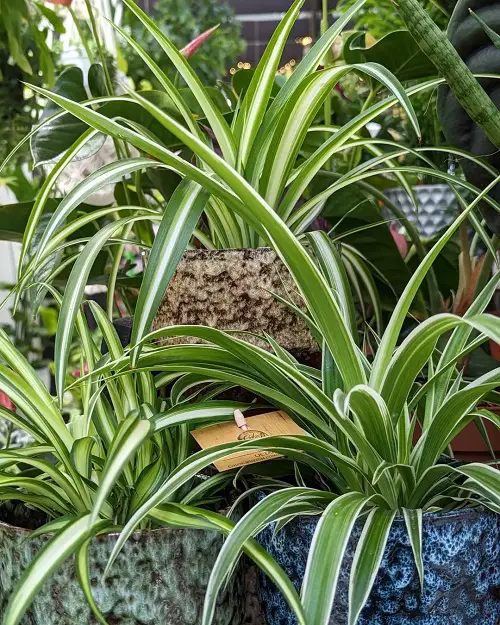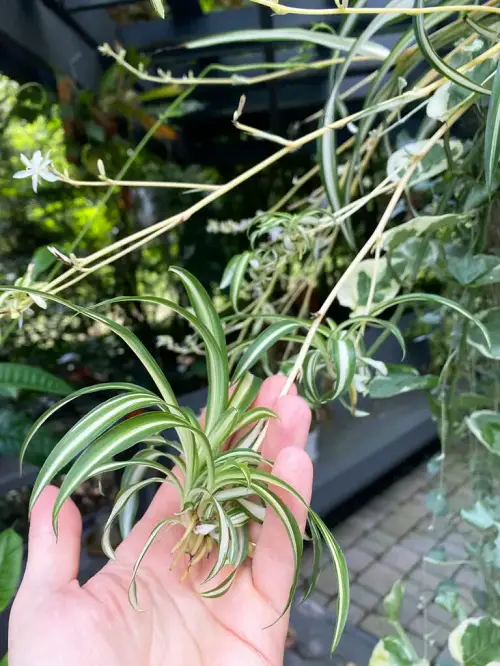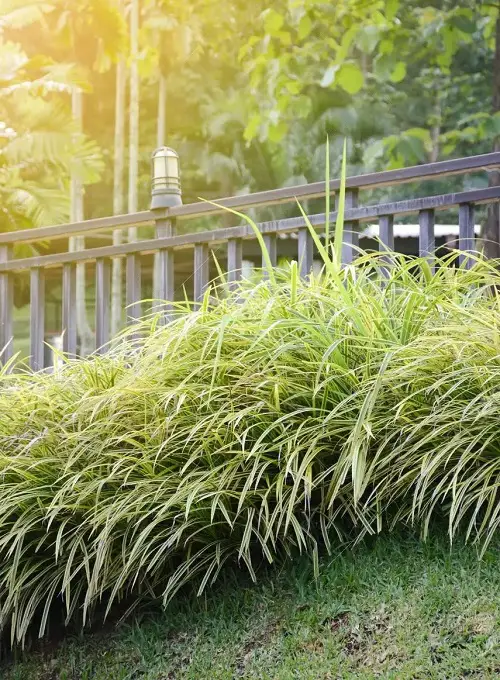Known for its stunning foliage and ease of care, here is our detailed article on How to Grow Spider Plant Outdoors.

Want to know How to Grow Spider Plant Outdoors? This guide has all the tips and tricks you need to ensure they stay healthy and thrive in the garden.
Spider Plant Information

The spider plant, scientifically known as Chlorophytum comosum, is a popular indoor houseplant known for its long, arching leaves and spider-like appearance. Here is some information about spider plants and their origin:
Spider plants have long, slender leaves that are green with white stripes or variegations running along the edges. The leaves grow in a rosette-like arrangement, with multiple arching stems that can reach lengths of up to 2 feet (60 centimeters). The plant produces small white flowers that eventually develop into plantlets or “spiderettes” that hang from the mother plant on long stems.
Spider plants are native to tropical and southern Africa. They can be found growing in countries such as South Africa, Swaziland, and Mozambique. In their natural habitat, they often grow in the shade of trees and receive dappled sunlight.
Click here to Learn How to Make a Spider Plant Flower
How to Grow Spider Plant Outdoors?

Spider plants can be propagated outdoors under certain conditions.
- Spider plants prefer bright, indirect light but can also tolerate partial shade. Select an outdoor location that receives filtered sunlight or dappled shade for a significant part of the day.
- They prefer well-draining soil. If your garden soil is heavy or clayey, amend it with organic matter such as compost or peat moss to improve drainage. Mix the organic matter into the soil thoroughly.
- Spider plants produce plantlets or “spiderettes” that hang from long stems. Once these spiderettes have developed a few roots (approximately 2-3 inches long), they can be transplanted outdoors. Gently detach the spiderettes from the mother plant, taking care not to damage their roots.
- Dig holes in the prepared soil, spacing them approximately 12-18 inches apart. The holes should be slightly larger than the root ball of the spiderettes.
- Place each spiderette into a planting hole and backfill with soil, ensuring that the roots are covered. Firmly press the soil around the base of the plantlet to secure it in place.
- After planting, water the spiderettes thoroughly to settle the soil and promote root establishment. Maintain moist but not soggy soil during the initial stages. Gradually reduce watering frequency as the plants establish themselves.
- Outdoor spider plants generally require less maintenance than indoor ones. Ensure they receive adequate water, especially during dry periods. Regularly check for pests and diseases and take appropriate measures to address any issues.
Learn about Spider Plant Care Indoors here
Requirements for Growing Spider Plants Outdoor
md:dark:border-transparent md:bg-vert-light-gradient bg-white dark:bg-gray-800 md:!bg-transparent dark:md:bg-vert-dark-gradient”>
Location
Spider plants thrive in bright, indirect light, making partial shade an ideal condition for them. Choose a location where the plants will receive filtered sunlight or dappled shade for a significant part of the day.
This can be under the canopy of a tree, near a north-facing wall, or in an area with light shade from surrounding plants.
Soil
Spider plants thrive in loamy soil, which is a balanced mixture of sand, silt, and clay. Loam retains moisture without becoming waterlogged and provides good drainage.
Incorporating organic matter into the soil improves its fertility and drainage. Mix in compost, well-rotted manure, or leaf mold to enhance the soil structure and provide essential nutrients.
Find out some Helpful Hacks to Improve Your Garden Soil for Free here
Adding perlite or coarse sand to the soil mix helps improve drainage and prevents waterlogging. These materials create air pockets in the soil, allowing excess water to drain away from the roots.
dark:bg-[#444654]”>
Water
Spider plants prefer consistently moist soil but not waterlogged conditions. Ensure that the soil remains evenly moist but not overly saturated or dry.
Check the moisture level of the soil regularly by inserting your finger about an inch deep into the soil. If it feels dry, it’s time to water.
Here are the best ways to water plants
Temperature
Spider plants prefer moderate temperatures and can tolerate a range of conditions. The optimal temperature range for spider plants is between 60°F and 75°F (15°C to 24°C).
They can tolerate higher temperatures up to around 90°F (32°C) but may show signs of stress if exposed to prolonged periods of extreme heat. Similarly, they can tolerate cooler temperatures down to around 45°F (7°C), but growth may slow down.
In regions with colder climates, spider plants are typically grown as annuals or moved indoors during the winter months. They are considered hardy in USDA hardiness zones 9 to 11.
Spider Plant Care Outdoors
Fertilizer
Use a balanced, slow-release granular fertilizer with an NPK ratio (nitrogen-phosphorus-potassium) of 10-10-10 or 14-14-14. This balanced ratio ensures that the plant receives essential nutrients in the right proportions.
Apply the slow-release fertilizer during the growing season, typically in the spring or early summer. Follow the instructions provided on the fertilizer packaging for application rates and frequency.
Want to Make Organic Fertilizers from Kitchen Scraps? Click here
If you prefer organic options, you can use compost or well-rotted manure as a natural fertilizer. Apply a thin layer of compost or well-rotted manure around the base of the plant, taking care not to let it touch the leaves or stems. Water the plant after applying organic fertilizers to help them incorporate into the soil.
Pests and Diseases
When growing spider plants outdoors in the garden, it’s important to be aware of potential pest issues that can affect their health. Some common pests that may target spider plants include spider mites, aphids, mealybugs, and scale insects.
To manage these pests, you can use insecticidal soap, neem oil, or a strong stream of water to wash them off the plant. It’s important to regularly inspect your spider plants for any signs of pest infestation and take prompt action to prevent them from spreading to other plants in your garden.
To prevent fungal issues, it is important to provide well-draining soil and avoid overwatering, allowing the top inch of soil to dry out before watering.




